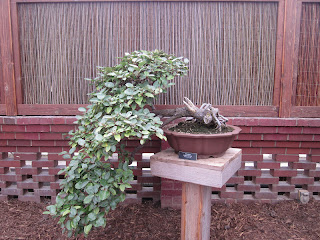I wanted something that I could grow inside my apartment during the winter that was cheap, easy to maintain and beautiful to look at; so I decided to go with some paperwhites.The paperwhite or
narcissus papyraceus is a perennial bulbous plant that grows well in groups and is very fragrant. The thing that I like most about these plants are that they don't need to be planted in soil; just place them among some rocks, add water, and watch them flower. This is an easy DIY for anyone to do, even if you don't have a green thumb.
Below I have some pictures of my little display chronicling the growth of the flowers.
 |
| My paperwhite bulbs. |
I bought the paperwhites at a garden center in October for less than 1 dollar a piece. You are supposed to keep them closed in a paper bag in a dry place until you are ready to plant them. Even though I kept them in the bag the whole time you can see that some shoots are already coming up.
 |
| Container with rocks |
Next take any type of container you want; something clear is preferable because then you can see the green stalks and rocks. I picked a low round bowl but something tall could also work. I added some some small pebbles for the roots to grow around and some large rocks to keep the bulbs in place.
 |
| Bulbs in the container. |
Place the bulbs however you wish in the container as long at the shoots will grow straight up. Then add water to just cover the small pebbles. Since this is in my bathroom I don't need to water it as much since the steam from the shower adds moisture to the air.
 |
| Stalks growing rapidly. |
Only a week later and already the shoots have grown into tall green stalks. I have no real method to watering the bulbs; only when it looks like there is no water left in the bowl.
 |
| First flower. |
A few days later and the first flower appears. You can see how one of the stalks is bent over but it righted itself again in a few days. I think this because of the amount of sun coming in the window and the temperature outside.
 |
| Lots of flowers |
About two and half to three weeks later all of the bulbs have now flowered. Again some of the stalks have gone sideways but I was able to right them all.
 |
| Bright and cheery for the winter |
 |
| Paperwhite Flowers |
Hope you learned how to bring something beautiful and easy to do into your own home.

















































